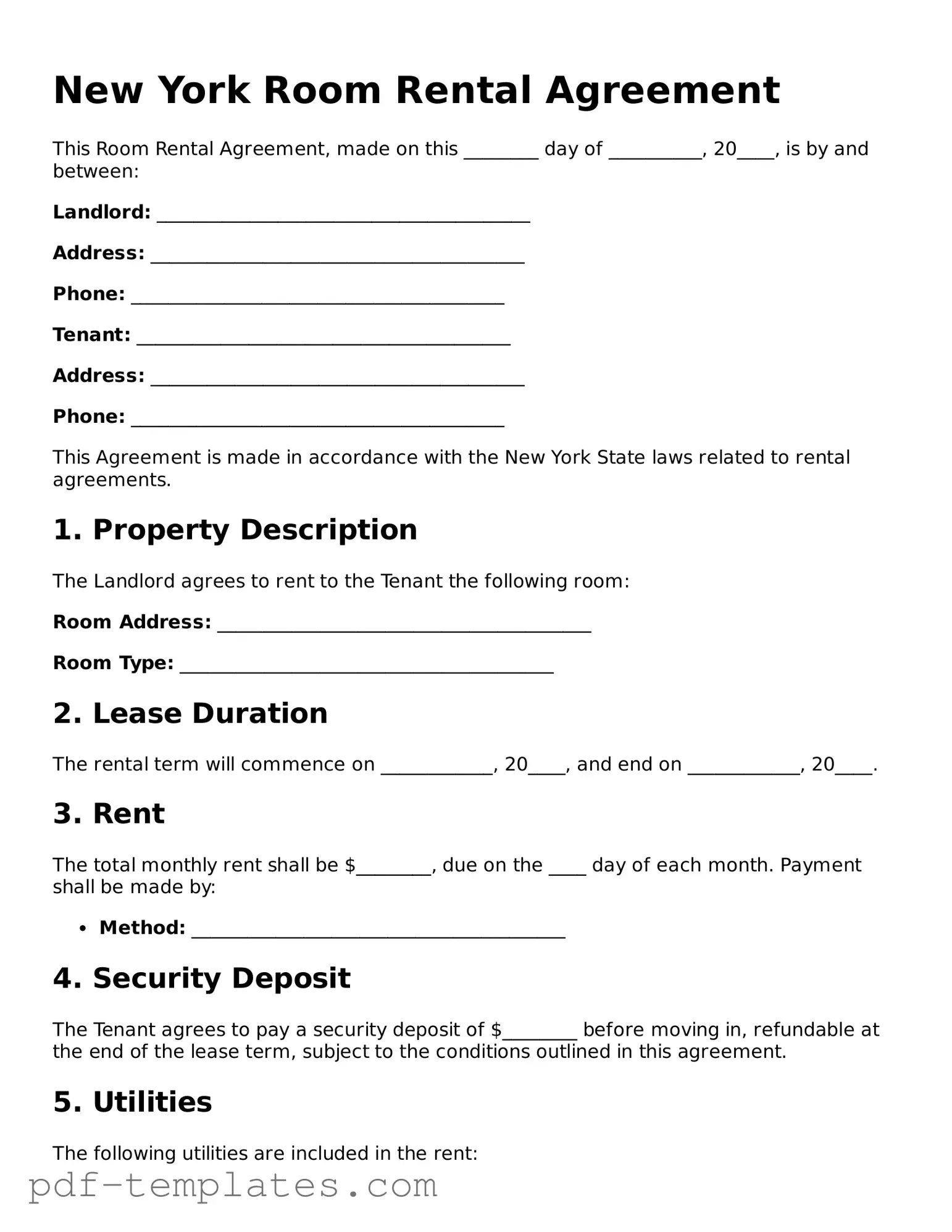The Lease Agreement is a foundational document in real estate transactions. It establishes the terms under which a tenant may occupy a property owned by a landlord. Similar to the Room Rental Agreement, it outlines the responsibilities of both parties, including payment terms, duration of the lease, and rules regarding the use of the property. Both documents serve to protect the interests of landlords and tenants, providing a clear framework for the rental relationship.
The Sublease Agreement allows a tenant to rent out their leased property to another party. This document shares similarities with the Room Rental Agreement in that it details the rights and obligations of the original tenant and the subtenant. It often includes provisions for rent payment, maintenance responsibilities, and compliance with the original lease terms, ensuring that the arrangement is legally sound and mutually beneficial.
The Rental Application is a preliminary document that prospective tenants fill out to express their interest in renting a property. Like the Room Rental Agreement, it is an essential part of the rental process. The application gathers personal information, rental history, and financial details, helping landlords assess the suitability of applicants before entering into a formal agreement.
The Rental Receipt is a document that acknowledges payment of rent. It serves as proof of payment for both landlords and tenants, similar to the payment provisions found in the Room Rental Agreement. This document can be crucial in resolving disputes regarding payment history and ensuring that both parties maintain accurate records.
The Move-In Checklist is a document that outlines the condition of the rental property at the time of occupancy. This checklist is often used in conjunction with the Room Rental Agreement to document any pre-existing damages or issues. Both documents aim to protect the rights of tenants and landlords by providing a clear record of the property’s condition at the start of the rental period.
The Eviction Notice is a formal document that a landlord may issue to a tenant for various reasons, including non-payment of rent. While the Room Rental Agreement sets the terms for tenancy, the Eviction Notice outlines the process for terminating that tenancy under specific circumstances. Both documents are critical in maintaining a lawful rental relationship and ensuring compliance with state laws.
The Pet Agreement is an addendum to a rental contract that specifies the rules regarding pet ownership within a rental property. Similar to the Room Rental Agreement, it details responsibilities and restrictions related to pets, such as breed restrictions and pet deposits. This document helps to clarify expectations and protect the property from potential damage caused by animals.
The Security Deposit Agreement outlines the terms under which a security deposit is collected and returned. It is closely related to the Room Rental Agreement, as both documents address financial responsibilities and the conditions under which funds may be withheld. This agreement helps to prevent misunderstandings regarding the security deposit and ensures that both parties are aware of their rights.
The Termination Agreement is a document that formalizes the end of a rental arrangement. Similar to the Room Rental Agreement, it specifies the conditions under which a tenant may vacate the property, including notice periods and final inspections. This document is essential for ensuring that both parties understand their obligations at the conclusion of the tenancy.
The Homeowner Association (HOA) Lease Addendum is a document that outlines additional rules and regulations imposed by an HOA for properties within its jurisdiction. It complements the Room Rental Agreement by providing specific guidelines that tenants must follow, such as noise restrictions and maintenance responsibilities. This addendum ensures that tenants are aware of community standards and helps maintain harmony within the neighborhood.
